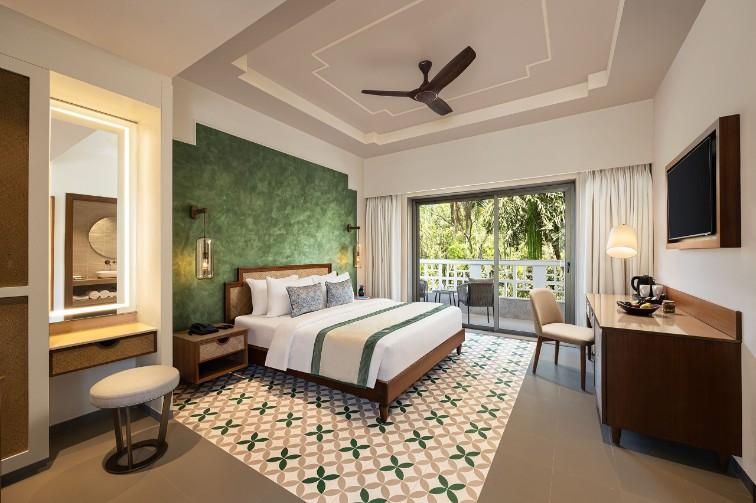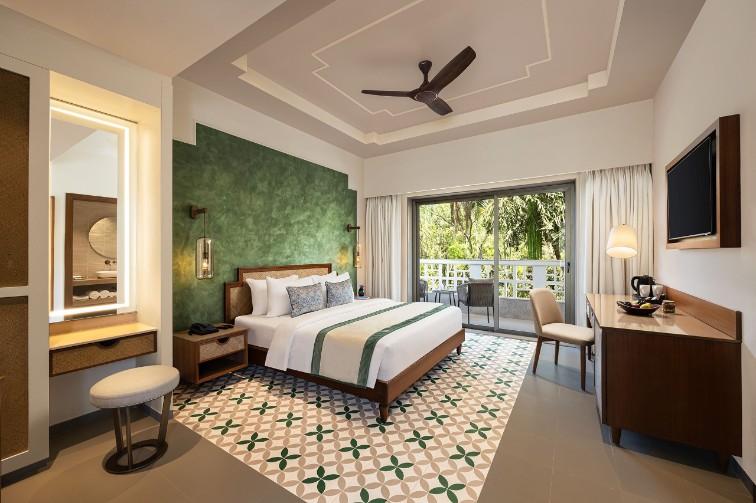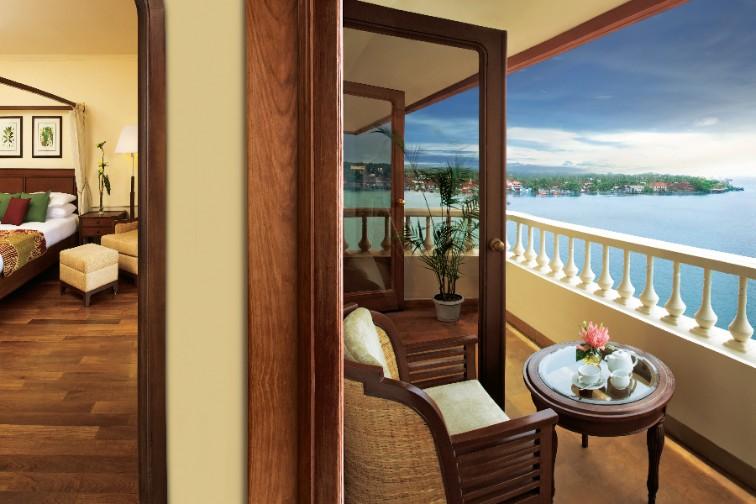
Hotels
•07 min read

Seville is a city that enchants every traveler with its vibrant culture, rich history, and stunning architecture. Nestled in the heart of Andalusia, this Spanish gem boasts an array of attractions that cater to all interests. From majestic palaces to lively flamenco shows, Seville offers a unique blend of old-world charm and modern flair. Whether you're a history buff, a culture enthusiast, or simply looking to soak in the beauty of a new place, Seville has something to offer. Let's explore the top 10 must-see places to visit in Seville that will make your trip unforgettable.
The Alcázar of Seville is a breathtaking palace complex that showcases a blend of Mudejar, Gothic, Renaissance, and Baroque architecture. As one of the oldest royal palaces still in use in Europe, it holds significant historical importance. Wander through its lush gardens and marvel at the intricate tilework and ornate ceilings. Tips: Visit early in the morning to avoid crowds and book your tickets online to skip the lines. The Alcázar has also been a filming location for popular TV shows like 'Game of Thrones', adding to its allure for fans.
As a UNESCO World Heritage site, the Seville Cathedral is a must-visit. It is the largest Gothic cathedral in the world and houses the tomb of Christopher Columbus. Don't miss climbing La Giralda, the cathedral's bell tower, for panoramic views of the city. Tips: Allocate at least two hours to explore the cathedral and climb La Giralda for the best experience. The cathedral's vast interior, with its impressive altarpiece and numerous chapels, offers a deep dive into religious art and history.
Plaza de España is an architectural marvel built for the Ibero-American Exposition of 1929. Its semi-circular building, adorned with colorful tiles, is a perfect spot for stunning photos. The plaza has also been featured in several films, making it a popular cultural landmark. Tips: Visit during the golden hour for the best lighting and explore the nearby Parque de María Luisa. You can also rent a rowboat to paddle around the plaza's canal for a unique perspective.
Metropol Parasol, also known as Las Setas, is a modern architectural landmark in Seville. Its wooden structure provides a striking contrast to the city's historic buildings. The viewing platform offers breathtaking views, and the underground Antiquarium showcases Roman and Moorish artifacts. Tips: Visit in the evening to see the city lights and enjoy a drink at the rooftop bar. The structure also hosts various events and markets, making it a vibrant community space.
Barrio Santa Cruz, the historic Jewish quarter, is a maze of narrow streets and charming plazas. This picturesque neighborhood is perfect for a leisurely stroll, with its whitewashed houses, flower-filled balconies, and hidden courtyards. Tips: Don't miss Plaza de los Venerables and the Hospital de los Venerables, a beautiful baroque building. The area is also home to numerous tapas bars where you can sample local delicacies.

The Torre del Oro, or Tower of Gold, is a 13th-century watchtower that offers panoramic views of the Guadalquivir River. It now houses a naval museum that provides insight into Seville's maritime history. Tips: Visit the tower in the late afternoon to catch the sunset over the river. The tower's name is derived from the golden glow it casts on the river, especially during sunset.
Parque de María Luisa is a lush oasis in the heart of Seville, featuring beautiful gardens, fountains, and pavilions. It's an ideal spot for relaxation and picnics. The park is also home to the Plaza de España and the Plaza de América. Tips: Rent a bike to explore the park and enjoy a leisurely ride through its scenic pathways. The park's design was influenced by the romantic gardens of the 19th century, offering a serene escape from the city's hustle and bustle.
Casa de Pilatos is a stunning Renaissance mansion with beautiful courtyards and a mix of architectural styles. It houses an impressive collection of Roman sculptures and notable artworks. Tips: Take a guided tour to learn about the history and significance of the mansion. The house's blend of Gothic, Mudejar, and Renaissance elements makes it a unique architectural gem.
Triana, a vibrant neighborhood across the river, is known for its flamenco culture. Experience the passion and intensity of flamenco at one of the many venues offering live shows. Tips: Book your tickets in advance and arrive early to get the best seats. Triana is also famous for its ceramics, so take some time to explore the local shops and workshops.
The Museo del Baile Flamenco is dedicated to the art of flamenco. It features interactive exhibits, costumes, and live performances that showcase the history and evolution of this captivating dance form. Tips: Check the schedule for live performances and participate in a flamenco workshop for a hands-on experience. The museum's founder, Cristina Hoyos, is a renowned flamenco dancer, adding authenticity to the exhibits.
Best times of the year to visit: Spring (March to May) and fall (September to November) offer pleasant weather and fewer crowds. Summer can be very hot, so plan accordingly.
Recommended duration of stay: Spend at least three to four days to fully experience Seville's top attractions. This allows you to explore at a leisurely pace and soak in the local culture.
Local customs and etiquette: Greet locals with a friendly "Hola" and be respectful of the siesta time in the afternoon. Dining out is a social affair, so take your time and enjoy the experience.

The top sights in Seville include the Alcázar of Seville, Seville Cathedral and La Giralda, Plaza de España, Metropol Parasol, Barrio Santa Cruz, Torre del Oro, Parque de María Luisa, Casa de Pilatos, Flamenco Shows in Triana, and Museo del Baile Flamenco.
It is recommended to spend three to four days in Seville to explore the main attractions and immerse yourself in the local culture.
Seville is a walkable city, and many attractions are within walking distance. Public transportation options include buses, trams, and bikes. Renting a bike is also a popular option for both locals and tourists.
Yes, some free attractions include exploring Barrio Santa Cruz, visiting Parque de María Luisa, and enjoying the views from Metropol Parasol's ground level. Additionally, many churches and historical sites offer free entry on specific days or times.
The best time to visit Seville is during spring (March to May) and fall (September to November) when the weather is pleasant, and the city is less crowded. These seasons also coincide with various local festivals, providing a richer cultural experience.
Yes, Seville is a great destination for families. Many attractions, such as Parque de María Luisa and the Seville Aquarium, are perfect for children. The city's parks and open spaces also provide plenty of opportunities for family-friendly activities.
Seville is a city that captivates every traveler with its rich history, vibrant culture, and stunning landmarks. From the majestic Alcázar to the lively flamenco shows in Triana, there is something for everyone in this beautiful Spanish city. Whether you're exploring the historic Barrio Santa Cruz or taking in the views from Metropol Parasol, Seville promises an unforgettable experience. So pack your bags, and get ready to immerse yourself in the charm and beauty of Seville!